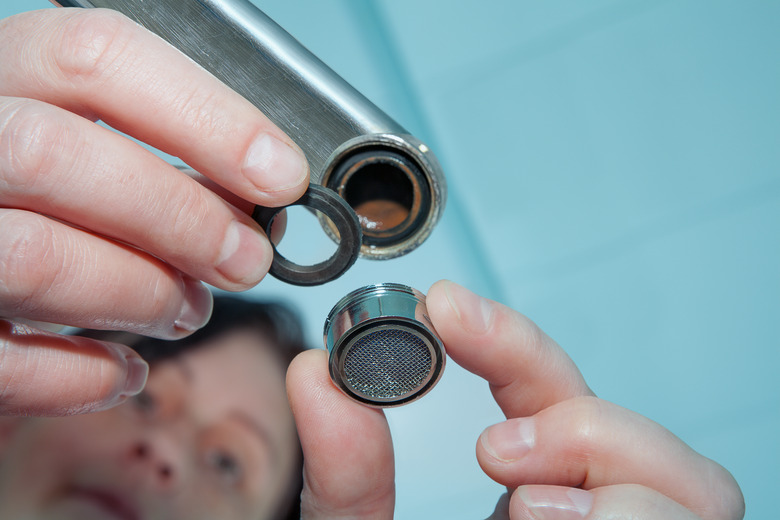How Does A Faucet Aerator Work?
While you've probably never thought about the water aerators on your faucets, they're an important part of every home. By mixing air and water, aerators serve a variety of functions and save you water and money.
How an Aerator Works
How an Aerator Works
A water aerator is a disc-shaped screen located at the end of the faucet. It's removable, simply by turning on or off the threaded end of the spout, and is designed to break up the water flowing through the faucet into several small streams while introducing air into the water flow. The aerator also lowers faucet noise and minimizes splashing.
An aerator also compresses the water flow. The combination of diluting the water stream with air and a tapered opening results in a reduction of water volume with the feel of a high-pressure flow. This process saves water with no noticeable reduction in water pressure. Saving water saves money, especially on the fuel you use to heat it. According to the EPA, high-efficiency faucet aerators can reduce a faucet's water flow by 30 percent, helping you save on both water and heating bills.
Types of Aerators
Types of Aerators
Faucet aerators are comprised of three main parts — a screen, a flow restrictor and the mounting piece that screws onto the faucet and uses an aerator washer to prevent leaks. But not all water aerators are the same. Though most aerators come with a male thread, there are also female versions. Standard faucet thread size is 15/16 inches male or 55/64 inches female. Aerators also come in different sizes and colors to fit the wide variety of faucets available to homeowners.
There are also standard aerators, which allow a flow of 2.2 gallons per minute, and high-efficiency faucet aerators, which have a maximum flow of 1.5 gallons per minute. According to the EPA, installing high-efficiency faucet aerators can save the average family 700 gallons of water per year, which is approximately the amount of water needed for 45 showers. At an average cost of under $10, these aerators are well worth it. The only downside is that an aerator with too low of a flow rate will noticeably increase the amount of time needed to fill a sink or do dishes.
Replacing an Aerator
Replacing an Aerator
Water aerators will often last the life of your faucet, but like most mechanical parts, they can develop problems. The most common problem is the screen becoming plugged with sediment and reducing the faucet's water volume. When a faucet begins to lose water pressure, this is often the cause. To fix it, simply remove the aerator by unscrewing it by hand from the end of the spout and either rinsing or cleaning the screen with a small brush. You can also gently use an adjustable wrench or a pair of pliers to remove the aerator.
If your aerator needs to be replaced, you'll have to find one that's compatible with your faucet. There are many sizes and styles of water aerators, and finding one to fit your faucet won't be difficult. Simply unscrew the old aerator and screw the new one on, making sure to remove the old aerator washer and use the new one to provide a good seal. In most cases, a homeowner can replace a water aerator in a matter of minutes.
